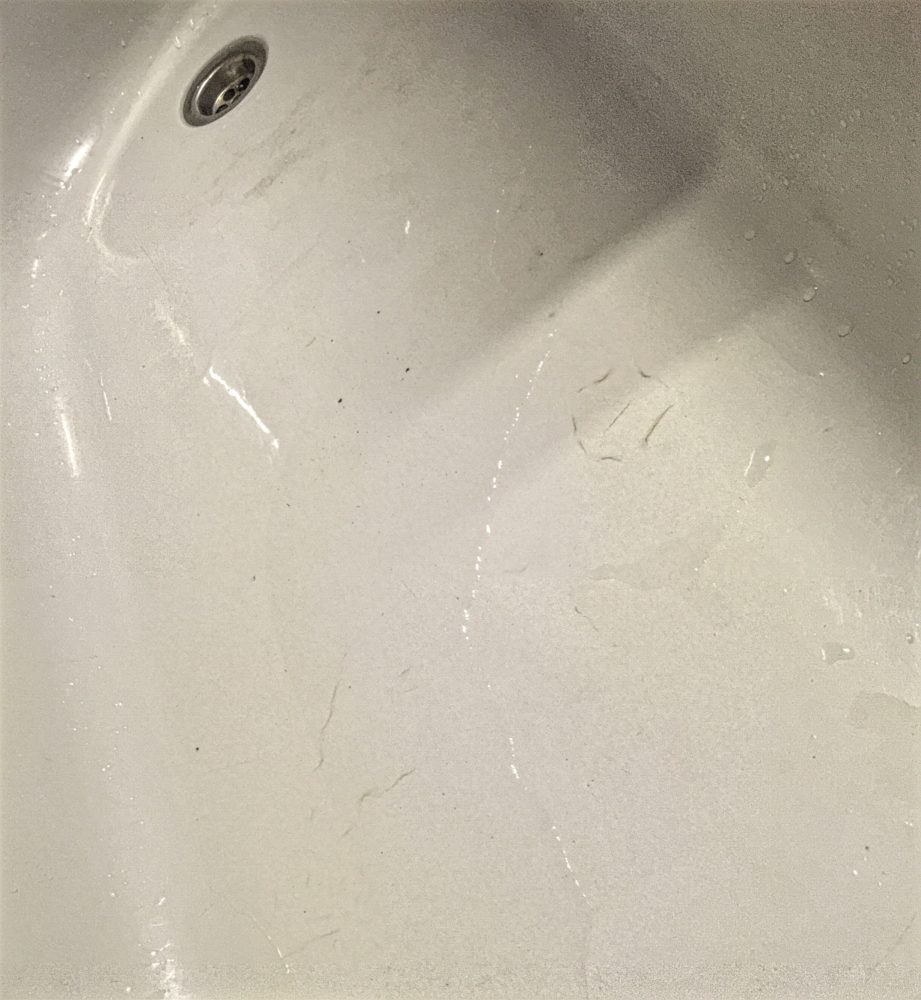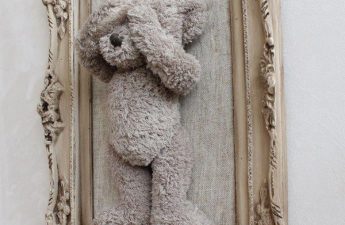An acrylic bathtub can not only be a salvation,but also pose a danger. In this article, we publish the sad story of the architect Ruslan Kirnichansky - When I bought a bathtub last year, I was sure that I saw light from a tunnel called "renovation", but how cruelly mistaken I was - it was not the light of the end, but of the next renovation, the cause of which would be that very bathtub. But first things first. As a specialist in the field of renovation, I prepared for the issue of transforming my new apartment and took into account all the risks: a construction team of professionals carried out all the work according to the standards and used high-quality materials. There are no complaints about the builders, as well as about the quality of the materials: after six months, my parquet was flooded with boiling water from the apartment above, but not a single board was damaged and the floors did not go "wave" - the parquet is high-quality, its installation was carried out by professionals. But one unpleasant surprise awaited me, which I bought myself and brought to the apartment - an acrylic bathtub. I have a good steel one in my old apartment.bathtub, but I decided to install an acrylic one in the new one, because it is lighter and more comfortable — it is warm, while a metal bathtub is cold and the water in it cools down quickly. The manufacturer also convinced me of the correctness of my choice, which guaranteed a service life of 30 years. And I made this mistake. The bathtub cost me a small amount — a little over six thousand rubles (they gave me a good discount). The builders installed it, sealed the gaps between the bathtub and porcelain tiles — the renovation of the entire bathroom was completed, which made me happy. Knowing that acrylic is a special material, I looked for special alkali-free cleaning products for the bathtub, so as not to spoil the coating or burn it with chemicals during cleaning. But after six months, the products stopped working: it became more difficult to clean the bathtub. Don't get me wrong, I didn't walk around the bathtub in shoes and didn't cook soups in it, but dirty stains appeared, and it was becoming more and more difficult to remove them. In this bathtub I only took showers and occasionally washed the cat.
I have a good steel one in my old apartment.bathtub, but I decided to install an acrylic one in the new one, because it is lighter and more comfortable — it is warm, while a metal bathtub is cold and the water in it cools down quickly. The manufacturer also convinced me of the correctness of my choice, which guaranteed a service life of 30 years. And I made this mistake. The bathtub cost me a small amount — a little over six thousand rubles (they gave me a good discount). The builders installed it, sealed the gaps between the bathtub and porcelain tiles — the renovation of the entire bathroom was completed, which made me happy. Knowing that acrylic is a special material, I looked for special alkali-free cleaning products for the bathtub, so as not to spoil the coating or burn it with chemicals during cleaning. But after six months, the products stopped working: it became more difficult to clean the bathtub. Don't get me wrong, I didn't walk around the bathtub in shoes and didn't cook soups in it, but dirty stains appeared, and it was becoming more and more difficult to remove them. In this bathtub I only took showers and occasionally washed the cat. When 8 years have passed since the bathtub was installedmonths, I began to notice other changes: the bottom of the bathtub had sagged a little and permanent gray stains had appeared. A year later, the bottom of the bathtub had sagged even more, and water was collecting there, unable to overcome the laws of physics and rise to the drain. The stains were becoming more contrasting, and I stopped inviting guests over, as they might notice the dirty bathtub and decide that I was sloppy. I desperately scrubbed the gray stains, but in vain. A couple of months later, I began to notice that the grout on the porcelain tile on the floor was damp, and there were traces of water on the floor itself. But everything became obvious last week: where the stains had been, cracks had formed, and the acrylic bathtub had turned into a “leaky trough.” So I went to the nearest construction hypermarket.
When 8 years have passed since the bathtub was installedmonths, I began to notice other changes: the bottom of the bathtub had sagged a little and permanent gray stains had appeared. A year later, the bottom of the bathtub had sagged even more, and water was collecting there, unable to overcome the laws of physics and rise to the drain. The stains were becoming more contrasting, and I stopped inviting guests over, as they might notice the dirty bathtub and decide that I was sloppy. I desperately scrubbed the gray stains, but in vain. A couple of months later, I began to notice that the grout on the porcelain tile on the floor was damp, and there were traces of water on the floor itself. But everything became obvious last week: where the stains had been, cracks had formed, and the acrylic bathtub had turned into a “leaky trough.” So I went to the nearest construction hypermarket. In the store I went straight to the metal ones.bathtubs: they are made of steel and cast iron. I gave up the idea of buying a cast iron bathtub because of its large weight, and considering that the size of my bathtub should be at least 170 cm long, a cast iron bathtub might not fit through the narrow corridors of the front entrance with the help of two movers - in such conditions, four people would be needed to lift it to my floor (there is no freight elevator in the building). I decided to choose a steel bathtub. I spent a long time checking the parameters and weight of the product. I even “tried on” samples to understand how comfortable the bathtub was. Among the store consultants, I found the specialist I needed - he explained everything to me and helped me choose a reliable steel bathtub, and also explained the possible cause of the cracks in my acrylic bathtub - a violation of the technology during its production - in other words, it turned out to be a factory defect. A new steel bathtub cost me only 5,400 rubles, I also bought legs - 500 rubles for two pairs. The next day after delivery, my builders came to replace the bathtub. What I saw under the bathtub cannot be described in literary language, so I’m just showing a photograph.
In the store I went straight to the metal ones.bathtubs: they are made of steel and cast iron. I gave up the idea of buying a cast iron bathtub because of its large weight, and considering that the size of my bathtub should be at least 170 cm long, a cast iron bathtub might not fit through the narrow corridors of the front entrance with the help of two movers - in such conditions, four people would be needed to lift it to my floor (there is no freight elevator in the building). I decided to choose a steel bathtub. I spent a long time checking the parameters and weight of the product. I even “tried on” samples to understand how comfortable the bathtub was. Among the store consultants, I found the specialist I needed - he explained everything to me and helped me choose a reliable steel bathtub, and also explained the possible cause of the cracks in my acrylic bathtub - a violation of the technology during its production - in other words, it turned out to be a factory defect. A new steel bathtub cost me only 5,400 rubles, I also bought legs - 500 rubles for two pairs. The next day after delivery, my builders came to replace the bathtub. What I saw under the bathtub cannot be described in literary language, so I’m just showing a photograph. Yes, the bathtub is cracked, but if the cracks on the bowl side are small and unnoticeable, then this crack is ugly.
Yes, the bathtub is cracked, but if the cracks on the bowl side are small and unnoticeable, then this crack is ugly. There was water under the bathtub. By the way, this is what quality waterproofing does - the water did not go to the neighbors, but remained in the space covered with foam blocks, and evaporated there.
There was water under the bathtub. By the way, this is what quality waterproofing does - the water did not go to the neighbors, but remained in the space covered with foam blocks, and evaporated there. The builders dismantled a number of foam blocks andstarted to install a new bathtub. The replacement process itself took about five hours, since it was necessary to carry out the work without major losses and not to damage the final coating of the walls. The builders completed the work and restored the foam block and porcelain stoneware. Now I have a steel bathtub, which I am incredibly happy about.
The builders dismantled a number of foam blocks andstarted to install a new bathtub. The replacement process itself took about five hours, since it was necessary to carry out the work without major losses and not to damage the final coating of the walls. The builders completed the work and restored the foam block and porcelain stoneware. Now I have a steel bathtub, which I am incredibly happy about. The conclusion that emerges from this situation is thatAn acrylic bathtub is an unreliable element in a house, but I cannot say this with a 100% guarantee, since I suspect that I got a defective product, but on the other hand, no one is insured against buying a factory defect.
The conclusion that emerges from this situation is thatAn acrylic bathtub is an unreliable element in a house, but I cannot say this with a 100% guarantee, since I suspect that I got a defective product, but on the other hand, no one is insured against buying a factory defect.
Acrylic bathroom: what you and your neighbors face factory marriage



